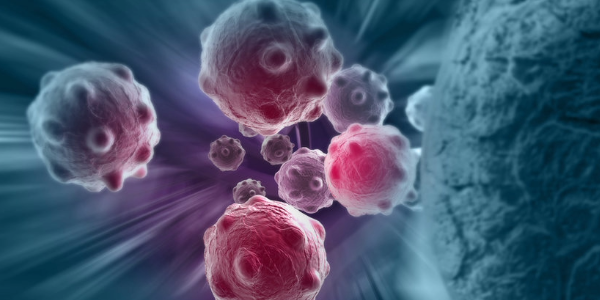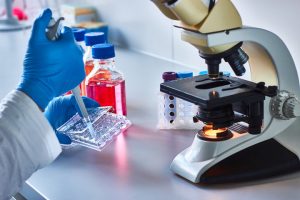When it comes to cancer, aging is a double-edged sword, as researchers are increasingly realizing. Age is considered the most important risk factor for cancer. This is because genetic mutations accumulate in cells over the years and decades, ultimately promoting the development of cancer. A study by researchers at the Memorial Sloan Kettering Cancer Center (MSK) and their collaborators now provides new insights into how advanced age can also protect against cancer. The study, which was conducted on a mouse model for lung cancer, was published in Nature.
Why Cancer Risk Declines Again in Older Age
“We know that people are more likely to develop cancer as they age,” said the study’s first author, Dr. Xueqian Zhuang, a postdoctoral scholar in the lab of senior author Dr. Tuomas Tammela at MSK’s Sloan Kettering Institute. “But there is still much that is unknown about how aging actually changes the biology of cancer.” Like many other cancers, lung cancer is diagnosed in most people around the age of 70, according to Zhuang. But once you reach 80 or 85, the incidence rate drops again. “Our research helps explain why that is,” she adds. Aging cells lose their ability to renew themselves and thus their ability to grow uncontrollably, as occurs in cancer. Overall, the findings have two important implications, according to the researchers:
- First, they point to the underappreciated role that iron plays in the regenerative capacity of aging cells—suggesting that therapies targeting iron metabolism may work better in younger people than in older people.
- Second, they underscore the potential value of early interventions and preventive measures that target the time window when most cancers arise.
To investigate why cancer incidence peaks in early old age and then declines, the MSK research team studied a genetically modified mouse model of lung adenocarcinoma, a common form of lung cancer that accounts for about 7% of all cancer deaths worldwide. One of the challenges of studying the aging process in laboratory models is that mice take two years to reach an age equivalent to 65 to 70 years in humans, making experiments lengthy and resource-intensive. However, the effort was worthwhile for the MSK researchers. The scientists found that as the mice aged, they produced more of a protein called NUPR1. More NUPR1 causes the cells in the lungs to function as if they were iron deficient.
The Regenerative Capacity of Cells is Linked to Iron Metabolism
“The aging cells actually contain more iron, but for reasons we don’t yet fully understand, they function as if they don’t have enough,” says Dr. Zhuang. Because the cells of the older mice functioned as if they didn’t have enough iron, they lost some of their ability to regenerate. And since this regenerative ability is directly linked to the development of cancer, the older mice developed far fewer tumors than their younger counterparts. Interestingly, this effect could be reversed by giving the older mice additional iron or by reducing the amount of NUPR1 in their cells.
The researchers believe this discovery has immediate potential to help humans. Millions of people, especially in the wake of the COVID-19 pandemic, are currently living with impaired lung function because their lungs have not fully recovered from infection or for other reasons. Experiments in mice have shown that iron supplementation can support lung regeneration, and there are very good ways to deliver drugs directly to the lungs, such as through asthma inhalers. However, this is where the double-edged nature of the discovery comes into play. Restoring the regenerative capacity of lung cells also increases the tissue’s susceptibility to cancer, as the study has shown. Therefore, this approach may not be suitable for people who are at high risk of cancer.
Older and Younger Patients May Respond Differently to Treatments Targeting Iron Metabolismn
The team’s findings also have important implications for therapies based on a form of cell death triggered by iron called ferroptosis. Ferroptosis was discovered in 2012, and there are a number of ferroptosis-inducing small molecule compounds, as well as FDA-approved drugs, being investigated for their potential to kill cancer cells. Older cells are far more resistant to ferroptosis than younger cells because they function as if they don’t have enough iron, the researchers found. This means that treatments targeting ferroptosis may not be as effective in older patients as in younger ones. “One of the insights we’ve gained from studying this iron biology is that ferroptosis, as generally believed, has tumor-suppressive effects—but to a much greater extent in younger animals,” says Dr. Tammela.
Dr. Zhuang adds, “For us, this means that as cells change biologically with age, their sensitivity to drugs also changes. Therefore, doctors need to be very careful in clinical trials, for example, and study the effects in both older and younger patients.” What these data suggest in terms of cancer prevention is that events that occur at a young age are likely to be much more dangerous than events that occur later in life. Therefore, according to the researchers, it is probably even more important than previously thought to keep young people away from smoking, sunbathing, and other obvious carcinogenic influences.






